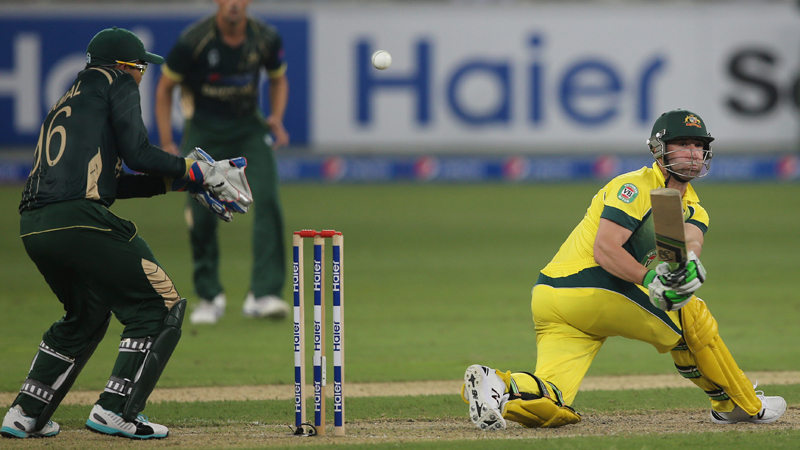Australian cricket player dies after head knock

In this Sunday, Oct. 5, 2014 file photo, Australian batsman Phillip Hughes hits the ball during the first International T20 cricket match against Pakistan in Dubai, United Arab Emirates. Test batsman Hughes died in a Sydney hospital on Thursday, Nov. 27, two days after being struck in the head by a cricket ball during a domestic first-class match. He was 25. (AP Photo/Kamran Jebreili, File)
SYDNEY — Australian batsman Phillip Hughes died in a Sydney hospital on Thursday, two days after being struck in the head by a cricket ball during a domestic first-class match. He was 25.
“It is my sad duty to inform you that a short time ago Phillip Hughes passed away,” Australian team doctor Peter Brukner said in a statement. “He never regained consciousness following his injury on Tuesday.”
Brukner said Hughes was not in pain before he died, and was surrounded by family and close friends.
“As a cricket community we mourn his loss and extend our deepest sympathies to Phillip’s family and friends at this incredibly sad time,” Brukner said.
Messages of support poured in from all around the world since Hughes collapsed after being hit behind the left ear after mis-timing a shot to a short-pitch delivery while batting for South Australia against New South Wales in a Sheffield Shield match on Tuesday. He underwent emergency surgery at nearby St. Vincent’s Hospital and remained in a critical condition in an induced coma.
Australia captain Michael Clarke was among the dozens of teammates, former teammates and cricket officials who visited the hospital in the following days.
Deaths are rare in cricket, although Hughes is the second player in two years to sustain a fatal blow.
Darryn Randall, who was 32 and a former first-class player in South Africa, was killed after being struck on the side of the head during a Border Cricket Board Premier League match in the Eastern Cape last year.
Images of Hughes collapsing face first at the Sydney Cricket Ground were broadcast almost instantly across Australia on Tuesday, when satellite TV trucks and dozens of news crews started reporting regular updates on his condition from outside the hospital.
Hughes played 26 test matches for Australia after making his debut 2009, but was not able to earn a regular spot in the starting lineup.
The injury sparked debate about short-pitch bowling in the game, the level of protection offered by helmets that first came into common use at the test level in the late 1970s, and the seemingly slow reaction time of the ambulance service as Hughes was treated on the field.
Bouncers, where a fast bowler aims to push the batsman back toward the stumps with a ball that lands halfway down the pitch and rears up above chest or head height, are still a regular and acceptable part of the game.
The International Cricket Council revised its laws on short-pitch bowling in the early 1990s, putting restrictions on the number of short-pitch balls allowed per over to stamp out bowlers merely using the delivery to intimidate batsmen.